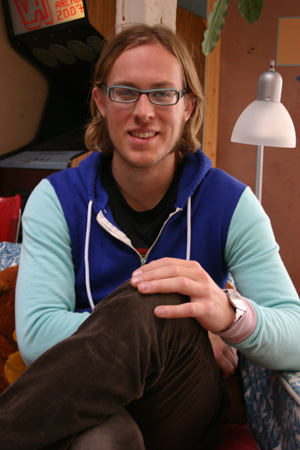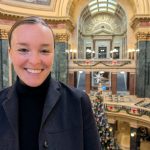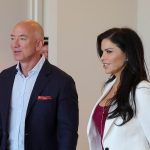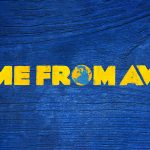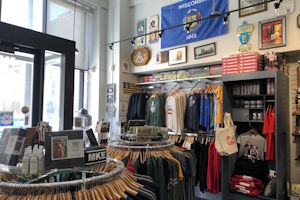2007-11 Vital Source Mag – November 2007
Ian Ball
Fans of Southport, England’s Gomez have long realized that with three songwriters in the band, there was bound to be a bit of venturing into solo-land, for true-blue songwriters can only collaborate and play nice for so long. Ian Ball has no desire to see his outfit disband, but is keen to try some orchestrations of his own, which are in turn are subtly lovely, genuine, organic and pleasing in their simplicity. It’s fair to call Who Goes There “piano-driven,” but don’t let that lead you to think this is a typical boy-and-his-piano heartstring-tugger. Rather, Ball has mastered an uncanny knack to make the absence of guitar largely unnoticeable. Instead, he magically manages to serve up a heavy rotation of a crunchy Fender Rhodes, mellow acoustic piano, electronic loopery and glass-clear glockenspiels that override the soft strummings of acoustic guitar in a playful way, lending a fresh sound to songs of love and its trials, which are lyrically a little cheeky, but never campy. Ball even manages to make getting high from enough drugs to tranquilize an elephant (“The Elephant Pharmacy”) sound charming. Ball’s skills as a solo artist lie in his ability to bring living-room ballads uncannily within reach, despite his intensely personal storytelling style. From the introspective, self-soothing opener “Sweet Sweet Sleep” to the bouncy “Automatic Message” and whimsical “When We Were Cool,” Ball doesn’t get in anyone’s face – just garners slow, but solid, appreciation. VS
Nov 5th, 2007 by Erin WolfJohn Riepenhoff 5 Q
It’s not easy being green, which is why John Riepenhoff, owner and curator of the Green Gallery, established the third-floor Riverwest venue expressly for fresh, emerging artists in 2004. An art school graduate and painter himself, the now-25-year-old could relate. Riepenhoff is interested in social interaction between artists of all media. The space currently hosts a monthly Movie & Masala night for neighborhood filmmakers and sponsors a culturally conscious residency program to align local and global artists, launched by the Institute of Quotidian Arts and Letters this past spring. Between a hectic show opening and a weeklong trip to London’s Frieze Art Fair, John squeezed in our five questions. Keep up with him at thegreengallery.tk. What paved your way from art student to gallery owner/curator? Even as a student, I would question for what and for whom art was made, so exploring the gateway from the artist’s hands to the public arena was a natural progression. Running a low-maintenance space — using a model similar to DIY rock house venues — eased my start, and the playfulness of the artists I exhibited directly elevated the gallery. The more artists and gallerists I met locally and nationally, the more I realized the significance of the Milwaukee art community; that still motivates me to continue the Green Gallery project, and to experiment with methods of showcasing art and encouraging local artists. How do your personal tastes and values guide the Green Gallery cut? The artists who show are ones that surprise me; they are making art that says “things are exciting right now” in a new way, or they are creating interesting situations that don’t yet have a venue but should. They are commenting on the conditions of art and popular culture in a way similar to a writer by critiquing aspects of experience and history, and by offering some alternatives. I like these traits in people, too. I like the meta. What are the highs and lows of your role? I get to meet so many creative and amazing individuals, and get to be a part of their lives. Some of my all-time favorite artists are real people that I helped reach a broader audience! Supporting and empowering artists by stimulating discussion and exposing their ideas to receptive audiences is a real high. Building, sanding, painting, cleaning and fixing the space are all of the lows that make the highs feel better-deserved. What makes Milwaukee a good home for art? In Milwaukee, people can find time for their own projects without having to pay inflated rent that many of the (other) art centers around the country indoctrinate. The art community here is small enough that one can find help for his or her projects in friends and acquaintances, as well as find other projects that might be a perfect showcase of her or his talent. I like to think that we Milwaukeeans can commit to our own personal voices without being distracted by the pettiness of mainstream […]
Nov 1st, 2007 by Amber HerzogWe’ve got to help Alan Keyes
Typically I don’t read every political email I receive anymore than I pore over my spam, but sometimes a subject line catches my attention. Recently, Alan Keyes was excluded from a Fox News-sponsored Florida GOP debate on the premise that he didn’t have the required 1% straw poll vote, even though the Iowa Poll allegedly had him at 2% just a week after he entered the race. Turns out, none of the polls used by the Florida GOP included Keyes’ name. Granted, they may have been taken before he declared his candidacy, but he’s in the race now and everybody knows it, even if his only true role ends up being to keep arch-conservative Christian issues in the debate. Keyes’ people sounded off, launching an email campaign to barrage Florida GOP chair Jim Greer with complaints. This morning I received another email from the Keyes campaign. He was recently excluded from the Family Research Council’s Values Voter Summit, reportedly because he entered the race too late to be included. His staff, however, cites that attendee Fred Thompson entered the race barely a week before Keyes. Most top tier candidates were there – unlike the Values Voter Debate held in September, where Keyes came in just behind Ron Paul and Mike Huckabee in a field absent Giuliani, Thompson and McCain. Keyes’ camp acknowledges that political event organizers have the right to invite (or not) anyone they choose, but that groups like the FRC are lying when they claim to invite ALL candidates. In the run-up, Keyes, clearly a candidate, didn’t get his invitation in the mail and when his camp called to see if it was lost, they were told that he simply wasn’t asked to participate. It seems a little sad to picture them all sitting around the office waiting for the mail and then calling the FRC, only to learn that they weren’t invited. I imagine their initial incredulity, followed by quickly rising ire and a subsequent email blast bitch-slapping the FRC, perhaps fired off in anger in the middle of the night. At the end of the day, I don’t really care about Alan Keyes’ candidacy. And it amuses me that I know so much about his campaign through official emails that dish dirt in that whiny, sanctimonious tone to which my ears have been deaf since I was a teenager tuning out my mom over dirty clothes on the floor. My first response is to tease Keyes for his picked-on demeanor and holier-than-all posturing, but in fact his situation reveals chilling political truths. Prior to the advent of email as the political machine’s communication tool of choice, citizens had to rely on the media to report stories of exclusion, favoritism and other abuses of power in a reportedly inclusive system. In Keyes’ case, there’s little chance his story would have gotten much play – he’s the quintessential fringe candidate. But by his ability to communicate with me directly, I am informed firsthand of ways in which his […]
Nov 1st, 2007 by Jon Anne WillowTug of War
Milwaukeeans went into a tizzy with the arrival of Whole Foods Market a year ago – was a national anchor in the East Side business district a sign that the city had finally arrived? Would Whole Foods serve as a “tentpole” for other natural and organic businesses in the city? Or would they jack up rent, lowball prices and drive the competition out of town? Would they be receptive to the sensitivities of the East Side community, or would they homogenize the neighborhood? And really, all fuss aside, wasn’t it a good thing that a huge, attractive corporation chose blue-collar Milwaukee, that long-neglected diamond-in-the-rough, for only its second location in the state? Now, for better or worse, Whole Foods is here. And by the end of the year, Urban Outfitters will be here too, in the Kenilworth Building just across the street. Anthropologie, also part of Urban Outfitters Incorporated, will open a location in the gentrified Third Ward. We have a Borders downtown, Starbucks courting our coffee loyalties, and a whole enclave of national retailers in the new Bayshore Town Center, including fast fashion marts like H&M and Forever 21 and super-cheap specialty grocer Trader Joe’s. We have more choices than ever before, which in some ways is welcome (who doesn’t love a two-buck bottle of decent wine, or a cute, cheap cardigan) and in some ways poses complications. How do we square up our love for a truly unique and personal shopping, dining or service experience with our lust for convenience, a great deal and free parking? Buying Your Way Out “This area, like the Brady Street area, is a healthy commercial neighborhood. It has been for years, and it is dominated by local independent businesses,” says Pat Sturgis, co-owner of East Side institution Beans and Barley. The independent natural foods grocer and restaurant has been in business for 33 years at the corner of North and Farwell – right across from the new Whole Foods. “As American consumers, we have really been trained in a very conscientious way to look for consistency. When you go somewhere else, you go to the mall, find the Cheesecake Factory, find a Crate and Barrel, go to someplace that is indistinguishable from any other place in the country,” Sturgis says. “There’s a Starbucks on Brady Street, but there are three other coffee shops, and those are healthy things.” Beans and Barley struggled after Whole Foods opened – especially for the first few months. A year later, sales have recovered, and their restaurant and deli sales have grown. “On the other hand, we were on our way to a record year [when Whole Foods opened],” Sturgis says. “It’s going to take a lot more work to get back to breaking any sales records here.” Rachel Ida Buff, a history professor and urban studies researcher at University of Wisconsin-Milwaukee and a lifelong co-op patron, had her reservations when the new Whole Foods was announced. A year later, her ambivalence holds. She moved to Milwaukee […]
Nov 1st, 2007 by Amy ElliottEnon
Enon waited only a year between the release of their sophomore album, 2002’s High Society, and their third disc, Hocus Pocus, and to a lot of fans’ ears, the lack of wait time showed. Perhaps the band realized this, because now it’s been a four-year wait for new material. The result, Grass Geysers…Carbon Clouds, is the best news possible for Enon fans: not only is the band back with a vengeance, but they spent all that time producing one of the best indie-rock dance records of the year.? Where Hocus Pocus featured a number of low key, mellow dinner party background tracks, Grass Geysers pushes the dinner table to the side to make room for the dance party. “Mirror on You” sets the pace, all fuzzed-out bass, handclaps and Matt Schultz’s shake-it-shake-it drums, with bassist Toko Yasuda’s pixie voice catching the listener’s attention right off the bat. A scant minute-forty-six later, “Colette” delivers more of the same; the synth-bass jam “Dr. Freeze” provides still more after that, its alien Ed-Wood-film-produced-by-Martians vibe providing the best ring entrance theme for a nonexistent luchador ever heard. The closest the album comes to taking a breather is the fantastic and instantly memorable “Mr. Ratatatatat,” a midtempo stomper that utilizes Enon’s secret weapon—the interplay of Yasuda’s demure Japanese vocals with guitarist (and ex-Brainiac gunslinger) John Schmersal’s barking croon. In an alternate universe somewhere, this song is already a smash chart-topper. That should be taken literally. This band isn’t just otherworldly; they’re multi-dimensional. The best we can hope for in this universe is that club deejays everywhere latch onto the unstoppable dance beats pounding their way out of Grass Geysers and into awaiting ears. If it takes another four years for Enon to produce a follow-up, that’ll be just fine. It’ll probably take many years beyond that to tire of this one.
Nov 1st, 2007 by DJ HostettlerBruce Springsteen
Bruce Springsteen’s career has been truly beyond reproach. Even those who aren’t fans have to acquiesce to the fact that he’s the definition of integrity in a business that thrives on the opposite. And while his popularity may have waned in the nineties, he still created provocative music that meant something both to him and to his audience. This is evidenced by recent releases from a number of young artists mining his sound and his aesthetic. Ah, but they could never be the real thing. And here in his 24th year of recording, Bruce produces yet another finely-crafted testament to his “Boss” title. Magic contains the most direct and immediate collection of rock music Bruce has put out since Born in the U.S.A. in 1984. The saxophone, the piano and the rest of the E Street Band are back in full regalia on songs like “Livin’ In The Future” and “I’ll Work For Your Love.” The driving rhythms, melodies and narratives are also back, particularly on “Last to Die.” But Bruce doesn’t stop there: on the title track he displays the entire spectrum of his talents as a creator. “Girls In Their Summer Clothes” is as innocent as it is wistful. And though it may turn some people off, there are also a number of songs that touch upon his acoustic, rootsy leanings, sparse and epic. Bruce makes albums that are the equivalent of audio novels. They tell stories, weave descriptions, paint landscapes and define characters. But he also always gives us a little prize wrapped in the theme of it all: the emotional resource that compels us to be the authors of our own existence. “Love (and attitude) is a power greater (and stronger) than death” he sings in his tribute to a deceased friend on the hidden track 12, “Terry’s Song.” Yep, that’s the magic.
Nov 1st, 2007 by Troy ButeroThe Art of Work
By Kerensa Edinger Milwaukee already has an art museum that in itself is a feat of engineering, but a museum dedicated to the art of engineering is another thing altogether. It may seem an anomaly, but we now have one of those, too. The new Grohmann Museum, on the campus of the Milwaukee School of Engineering (MSOE), is home to Man at Work: The Eckhart G. Grohmann Collection, the largest and most comprehensive of its kind. From agriculture to alchemy, coal mining to tax collecting, the approximately 700 paintings and sculptures display the vast breadth and evolution of human industry. With few exceptions, the artwork comes from the private collection of Dr. Eckhart Grohmann, an MSOE Regent, Milwaukee businessman and avid collector. Grohmann grew up in Germany, where he would often visit his grandfather’s marble processing business and quarry in Silesia (now part of Poland). In watching the stonecutters and sculptors toil to select and transform their raw materials, he developed an admiration for the beauty of work. To Dr. Grohmann, work is an essential, evolving aspect of human progress. Currently the chairman and president of Milwaukee’s Aluminum Casting and Engineering Company, which makes high-volume aluminum components for the automotive industry, Dr. Grohmann began his extensive art collection in the 1960s. Grohmann and his wife, Ischi, have long contributed to scholarships for MSOE students and donated funds to buy the property for the Kern Center, MSOE’s health and wellness facility, just a block from the museum. In the same philanthropic vein, Grohmann donated his collection for the purpose of establishing a museum and provided the funds to purchase and renovate the building that would house it. Constructed in 1924, the three-story, 38,000 square-foot concrete structure was home first to an automobile dealership, Metropolitan Cadillac, and then later occupied by the Federal Reserve Bank until 2004. To fit the needs of the Federal Reserve Bank, the building had relatively small windows and secure, anonymous entrances. MSOE purchased the structure in 2005; demolition and renovation began in September of 2006. Uihlein-Wilson, the project’s architects, kept the small windows –ideal for allowing in just enough light to preserve the delicate artwork – but replaced the corner of the building at Broadway and State with a glass cylindrical atrium capped by an open metalwork dome. Soaring over the museum’s entryway is the 700-square-foot mural, its two hemispheres, Vulcan’s Forge and Great Minds of History, linked by a spinning celestial wheel. Vulcan’s Forge reinterprets The Element of Fire, a 16th-century painting by a student of Francesco Bassano that depicts the Roman god Vulcan forging arrows for his son Cupid while Venus, combing her hair with one breast demurely bared, looks on. For his mural, the German artist H.D. Tylle lifted these primary figures from their cluttered, gloomy backdrop and set them against a simple landscape of rolling hills and blue sky. He used live models and new costumes to paint the figures, transforming the placid, stylized originals into striking creatures of flesh and blood. The […]
Nov 1st, 2007 by Vital ArchivesJames Luther Dickinson
As producer and musician, Jim Dickinson has had a hand in masterpieces by Aretha Franklin, The Rolling Stones, The Flamin’ Groovies, Big Star/Alex Chilton, Ry Cooder, The Replacements and Bob Dylan – not to mention raising his sons, The North Mississippi All Stars. As a solo artist, Dickinson released his debut in 1972 (the classic Dixie Fried) and waited thirty years before following it up. Reminds me of a joke my grandpa used to tell about “a long time between drinks.” Dickinson has picked up the pace significantly since; Killers From Space is his third album since 2002. His choice in material and the very way he inhabits a tune go a long way to defining that particularly indefinable brand of Memphis strange. Ranging from Tin Pan Alley to blues to gospel to all-out rockers, Dickinson’s weathered vocals put the listener front-row-center to characters that may be down and out, but have more soul than they can handle. “I Need You” reveals menace that in lesser hands would be camp. Here its wheezy harmonica and piano interplay suggests the last gasp of Jay Hawkins at St. James Infirmary. Dickinson is a national treasure; he should be on a postage stamp.
Nov 1st, 2007 by Blaine SchultzRecalling the Wisconsin Idea
By Barry Wightman A century ago there was a political agenda known as the “Wisconsin Idea.” As Sanford D. Horwitt, author of Feingold: A New Democratic Party, puts it, the idea at the center of then-nascent progressive political thinking “became widely known as shorthand for new, enlightened rational government that would rein in laissez-faire capitalism, invest in vastly expanded educational opportunities and infrastructure, and use the expertise at the University of Wisconsin to create pioneering programs to promote the health, safety and economic interests of ordinary workers and farmers alike.” One would be hard-pressed to argue with that agenda. Famed Wisconsin Governor and Senator, Robert M. La Follette, one of Russ Feingold’s political heroes, personified the progressive Wisconsin Idea. And understanding La Follette is key to understanding our current senator. Having read La Follette’s autobiography as a high school student, Feingold was steeped in the progressive tradition. Simply put, true progressives believe in competence, community and thrift and are fervently against the power of big money and behind-the-scenes influence. With roots in the Northern European traditions of many of Wisconsin’s 19th century settlers, progressives cover a wide political spectrum that, in today’s terms, is neither red-state nor blue-state. And it is that pragmatic, party boundary-crossing approach that is central to Feingold’s politics. Progressivism as a coherent political movement is largely forgotten, its tenet planks scattered among the dusty platform statements of the two major parties of the 20th century. But Feingold is, by the historic definition, a progressive. Asked about the prospect for a progressive revival in 21st century America, Feingold was hopeful. Saying that his hero Bob La Follette would be “passionate” about today’s possibilities, Feingold is clearly working to speak for the independent, pragmatic and public-minded of Wisconsin. Those are not the words of cautious man. Feingold’s habit of confounding the leaders of the Democratic Party establishment would have been familiar to “Fighting Bob” La Follette. Feingold’s was the lone vote against the Patriot Act in 2001 and he was one of the few to vote against the authorization for war against Iraq in 2002. He was also the only Democrat to vote to continue the Senate Clinton impeachment proceedings in 1998 – a very unpopular position, at least among Democrats. And with Republican maverick John McCain, he has consistently championed campaign finance reform, attempting to drive corrupting big money from the national political process. Feingold, Horwitt writes, can be counted on to vote for reform, not to play it safe. As a result, Feingold frequently tangles with his more cautious contemporaries. His 2002 public dust-up with Senator Hillary Clinton on campaign finance – she claimed he wasn’t living in the “real world” – rocked the party boat, as did the recent failed Feingold-Reid Senate bill to end the Iraq war. Many Democrats veered away from him. But Feingold remains undeterred, going about the business of serving his state and nation unbowed by what some might perceive to be political failures. In speaking about the war at one […]
Nov 1st, 2007 by Vital ArchivesUnion Forever
It’s an unseasonably hot October afternoon in Greendale, and Abraham Lincoln and Ulysses S. Grant are holding a press conference. Looking appropriately pallid and drawn, Lincoln dabs at his brow and scans the crowd, patiently awaiting the next question. Minutes pass. Flies plow through the humid air. People shuffle their feet uncomfortably and General Grant looks like he’s going to pass out. Finally, a doughy, middle-aged man in Packers-flavored Zubaz raises his hand and breaks the silence. “Mr. President,” he begins. “Which battle of General Grant’s recent campaign do you feel has been most important for the Union?” Lincoln clears his throat and starts to answer, but his words are lost on me (something about Pittsburgh?) My brain – usually a finely furnished warehouse of post-collegiate knowledge and Full House trivia – is currently nothing more than an aching, throbbing, hung-over mess from the night before. Now, half-asleep in an overcrowded barn, listening to the Great Emancipator himself yammer on about an ancient, tide-turning battle (Vicksburg?), the events of the past 24 hours begin to blend together. One second it’s “We will never forget the sacrifices of Gettysburg, Pennsylvania,” the next it’s “I now pronounce you husband and wife through the authority of the Universal Life Church of Modesto, California.” Eventually, the two men finish things up and the crowd breaks into applause, snapping me back to the re-enacted reality at hand. I’m at the 4th Annual Civil War Encampment at Trimborn Farm, located in charming Greendale, Wisconsin – a five-minute drive from the Southridge Olive Garden. It’s a quaint event, and not nearly as kitschy as one might expect: basically a home-brewed Renaissance Fair with slightly more historical significance and a lot less jousting. As always, I’m accompanied by my long-suffering girlfriend, who, like myself, finds any event whose itinerary includes the words “Press Conference with Abraham Lincoln & General Ulysses S. Grant in the Threshing Barn” simply too good to pass up. Leaving the confines of the Threshing Barn behind, we take in the sights. Horses stand tethered to trees near a clutch of Union tents and lean-tos on the farm’s west end. The Confederate camp lies 100 yards to the east, just beyond a stone root cellar and an entirely authentic Cousins Subs cart. Barefoot children in Huck Finn suspenders dart past period-costumed women tending to small pit-fires across from a dilapidated pump house. A vintage baseball team playing sans gloves – The Milwaukee Cream Citys BBC – puts on an exhibition near the Jeremiah Curtin House (free tours all year round!). The sound of snare drums and harmonicas is inescapable, and the air is thick with the smell of gunpowder and horse shit. We sit down in the grass near the main field for an infantry firing demonstration. As we watch the “troops” go through an endless series of formations and exercises (prompting one snot-nosed weasel to shout, “Start the war, already!”), I’m struck by the precision, the exactness, the reverence of their actions. It’s a […]
Nov 1st, 2007 by Matt WildNovember 2007
November 6th Angels & Airwaves I-Empire Geffen Chris Brown Exclusive Jive Jimmy Buffett Live in Anguilla Mailboat Cassidy B.A.R.S. Full Surface/J Counting Crows Saturday Nights, Sunday Mornings Geffen Kevin Elliot and The Broken Damage of This Day Broke City Rob GEE Rob GEE Rock Ridge Music Jay-Z American Gangster Def Jam Kanekoa Under the Coconut Sky Major Hana/Fontana/ Universal Keak D Sneak Deified Broke City Little Big Town A Place to Land Equity Music Group Monster Magnet 4 Way Diablo SPV Nonpoint Vengeance Bieler Bros. Nicole Scherzinger Her Name is Nicole… Interscope Rick Springfield Christmas With You Gomer November 13th Boys II Men Motown: A Journey Through Hitsville USA Decca Dane Cook Rough Around the Edges: Live From Madison Square Garden Comedy Central Dillinger Escape Plan Ire Works U.K. – Relapse Céline Dion Taking Chances Epic Duran Duran Red Carpet Massacre Epic Aretha Franklin Jewels in the Crown: All-Star Duets with the Queen Arista The Hives The Black and White Album Octone/Interscope Ja Rule The Mirror The Inc. Alicia Keys As I Am J LCD Soundsystem 45:33 DFA Nelly Brass Knuckles Derrty/Universal Pitbull The Boatlift TVT Seal System Warner Shaggy Intoxication Big Yard/VP James Taylor One Man Band Hear Music Wu-Tang Clan The 8 Diagrams Loud/SRC/Universal Trisha Yearwood Heaven, Heartache and the Power of Love Big Machine November 20th Foxy Brown Brooklyn’s Don Diva Black Rose Entertainment/Koch Daft Punk Daft Punk Alive 2007 Virgin November 27th Mary J. Blige Growing Pains Matriarch/Geffen Kylie Minogue X International-EMI
Nov 1st, 2007 by Vital ArchivesWhen the Banana Leaves Split
North Shore Bistro 8649 N. Port Washington Fox Point, WI 53217 414-351-6100 “Yes, we have no banana leaves. We have no banana leaves today.” This devastating news from his purveyor might have crushed any other chef just hours away from a gala dinner for the prestigious American Culinary Federation. The problem? His showcase dish was to be Polynesian-style triggerfish steamed in banana leaves. Wolf, however, put his thinking toque on and turned potential disaster into a creative opportunity. With the prestidigitation of a master illusionist he came up with the solution: The Milwaukee Zoo! After all, who in the area buys more bananas? Wolf admits he had a moment of sweaty panic, but the Zoo’s contribution saved dinner for some very discerning primates with cultivated palates. A Homestead High School graduate who grew up in Thiensville and Mequon, Wolf was a regular guy into sports, hunting and fishing. Football, wrestling and track were his games. Nothing suggested that he would end up as the Corporate Chef for the high-end NStars Restaurant Group. During high school Wolf was a self-described “Friday Fish Fry Bitch” at a local eatery. [I know the feeling having been a Friday Night Football Pizza Bitch in college myself.] As a teenager, Wolf also worked at the Four Seasons in Mequon – and at Sardi’s. He still gets a dreamy look in his eyes describing Sardi’s beef and chicken spiedini cooked with tomatoes and peppers, simmered until the meat fell off the bone. He studied the gastronomic arts at Johnson and Wales University in Providence, Rhode Island and returned to Milwaukee upon graduating. “After culinary school I worked for Larry’s Brown Deer market. It was a great experience working with such high quality cheeses and imported products.” The young chef then worked at Mike & Anna’s for eight years. “The owner, Tony Harvey,” says Wolf, “created a great environment to learn in. It started out as a 50-seat Northern Italian bistro. Tony’s mother was a blast and his dad was a World War II vet with great stories. As young as I was in this business, I had the opportunity to do whatever I wanted. We had a chalkboard menu that constantly changed: rack of lamb, fois gras, scallops, turbot. Whatever we wanted.” Since Harvey also ran Rent-a-Chef, a catering business, Wolf was left much to his own devices at the restaurant. The North Shore clientele had high expectations and chefs like Scott Sebastian, Patrick Schultz, and Richard Staniszewski consistently met and exceeded them. It was a place for great food in a warm, inviting environment. Wolf recalls Mayor John Norquist, who lived nearby, as a frequent diner. “He’d have his bottle of wine, dinner and then fall asleep there right in his chair — he must have felt very comfortable.” The family feel of the restaurant extended to the little kitchen garden in the back full of herbs, edible flowers, nasturtiums, pansies and tiny roses. The owners of the North Shore Bistro – Michael Tarney, Elias […]
Nov 1st, 2007 by Cate Miller

